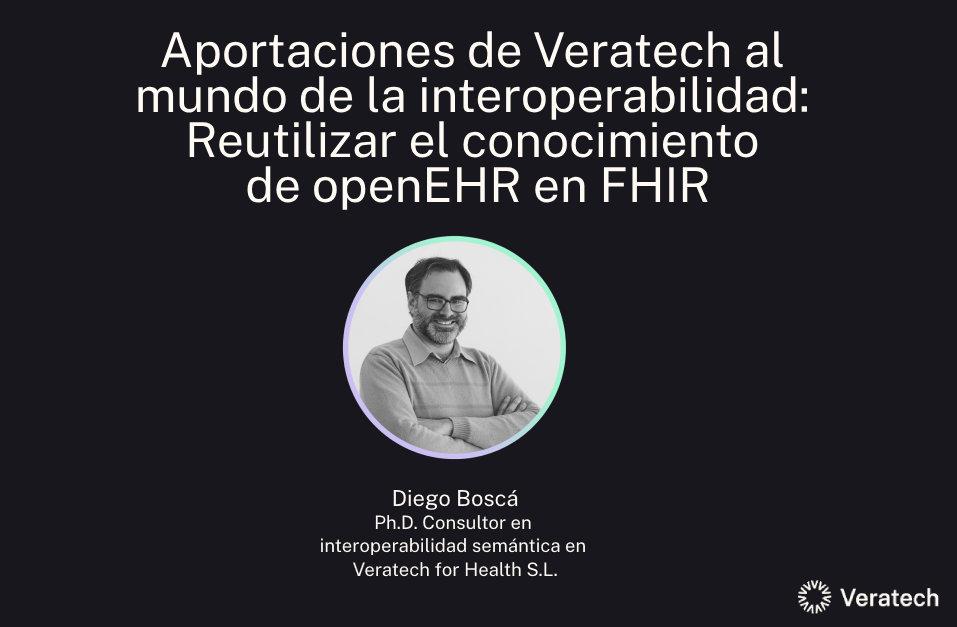Contributions of Veratech to the World of Interoperability: Reusing openEHR Knowledge in FHIR
There is a fundamental point we need to understand: each standard has its place in the complete solution to the interoperability problem.
We must stop viewing standards as competitors and start thinking of them as puzzle pieces that fit together. This is our greatest and most challenging task: to make it clear that interoperability is a set of rules, not just a standard applied at a specific moment in time. It is not about choosing one standard over another; exclusion does not exist. Interoperability means seeking systems that coordinate with each other and making the most of them.
Quality models should be the foundation of any interoperability development.
At Veratech, we are experts because we understand all of them—not only individually but also how they interact and how to help all the centers we work with achieve the best synergies
Understanding how information standards work together is increasingly necessary, as we need everyone's collaboration to move towards true semantic interoperability.
Following the announcement of the collaboration between openEHR and FHIR , both communities have started exploring ways to implement this collaboration. At Veratech, we want to present a series of works and developments available to the entire community that demonstrate not only that openEHR and FHIR can coexist but that their combination can offer clear advantages.
Let's start with the latest development: we recently presented the transformation of 619 archetypes into FHIR logical models, available on GitHub. This allows the reuse of knowledge from openEHR clinical models in any FHIR project. Related to this, Veratech has provided the community with an online toolkit for transforming archetypes and templates into FHIR artifacts. Specifically, the toolkit includes transformations from openEHR archetypes and templates to FHIR Observation and ValueSets profiles, transformations from openEHR archetypes and templates to FHIR Questionnaires, and the aforementioned transformation from archetypes to FHIR Logical Models.
It is also worth noting that Veratech has worked on the reverse process, transforming models (from FHIR profiles to openEHR archetypes). This must be done carefully, as there is a risk of generating archetypes that may not be as maximal as they should be, which could impair potential use cases for the models. LinkEHR platform can generate CLUSTER or GENERIC_ENTRY archetypes from FHIR profiles.
Lastly, did you know that archetypes can be created based on the HL7 FHIR model? At Veratech, we have been using them for data mapping and reference material generation, which provides a very direct and clean workflow.
Would you like to integrate openEHR and FHIR at your center, or are you unsure how to do it? We can help with that


